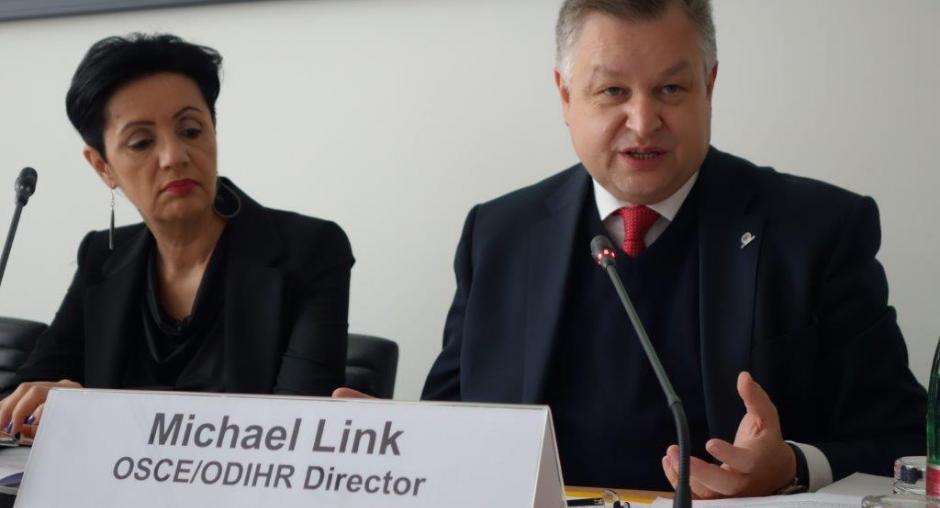OSCE Contact Point for Roma and Sinti Issues marks 20 years since its creation

WARSAW, 5 December 2014 – Today marks the 20th anniversary of the Budapest Summit, when the OSCE participating States signalled their commitment to improving the situation of Roma and Sinti in the OSCE region by creating a Contact Point for Roma and Sinti Issues (CPRSI). Since then, the CPRSI has been instrumental in addressing the historic discrimination and persecution of Roma and Sinti and in promoting their inclusion in the region.
Contained within the OSCE Office for Democratic Institutions and Human Rights (ODIHR), the CPRSI has acted as a focal point for reviewing the implementation of OSCE commitments relating to Roma and Sinti and for facilitating contacts between participating States, international and non-governmental organizations and OSCE institutions. Through field visits, workshops, publications and teaching materials, the CPRSI works to improve the situation of Roma and Sinti, including by combating racism and discrimination against Roma and Sinti, improving their access to education, addressing their socio-economic needs, building on good relations between police and their communities and enhancing their participation in public and political life.
“The role of the CPRSI in putting Roma and Sinti issues on the policy agenda is unparalleled,” said Michael Georg Link, Director of ODIHR. “In the 20 years since its creation, the CPRSI has made significant progress in shaping institutional mechanisms to protect the rights of Roma and Sinti and to promote their inclusion at all levels of government and society. Today marks an important milestone and is a time to reflect on the progress made and the way forward,” he added.
The CPRSI is also responsible for drafting ODIHR status reports on the implementation of the 2003 Action Plan on Improving the Situation of Roma and Sinti in the OSCE region, a key policy instrument for promoting Roma and Sinti inclusion. The status reports examine activities undertaken by OSCE participating States to improve the situation of Roma and Sinti in the region by assessing progress, identifying challenges and defining priority areas for action. The reports’ findings represent a vital resource for states in their efforts to achieve the objectives laid out in the Action Plan.
“Over the past few decades, the OSCE human rights agenda on Roma and Sinti has shifted from raising awareness of the issues to applying practical tools on what needs to be done. In the last eight years the discussion has centred on how Roma and Sinti integration can be effectively achieved,” said Mirjam Karoly, ODIHR’s Senior Adviser for Roma and Sinti Issues. “The missing element to realizing this goal is strong and genuine political leadership coupled with the meaningful participation of Roma and Sinti. This has to become a focus of the international agenda for the coming years.”
In addition to informing the policy agenda, the CPRSI has conducted a number of field visits in recent years to evaluate the situation of Roma and Sinti on the ground, including, most recently, a visit to Ukraine in 2014 to assess the challenges and risks facing Roma and Sinti in conflict situations. In particular, CPRSI’s assessment found that a lack of civil registration documents and poor public perceptions of Roma and Sinti make them particularly vulnerable in the displacement context.
Additionally, the CPRSI has made the empowerment of Roma and Sinti women and youth a focus of its work, including by holding consultations with Roma women to mainstream their interests within the overall OSCE gender equality agenda and by organizing a youth forum for young representatives of Roma and Sinti, among other activities.
“Policy makers should recognize that the success of inclusion programmes is dependent on Roma and Sinti having ownership of them, something that the OSCE has acknowledged from the very beginning,” said Lucie Fukova, Member of the Government Council for Roma Minority Affairs and Member of the Green Party of the Czech Republic. “To make this a reality, Roma and Sinti, especially women and youth, must to be included in decision-making processes both in elected office and in public administration. The barriers to real participation are still many and significant, and their efforts to participate need to be supported and nurtured.”
